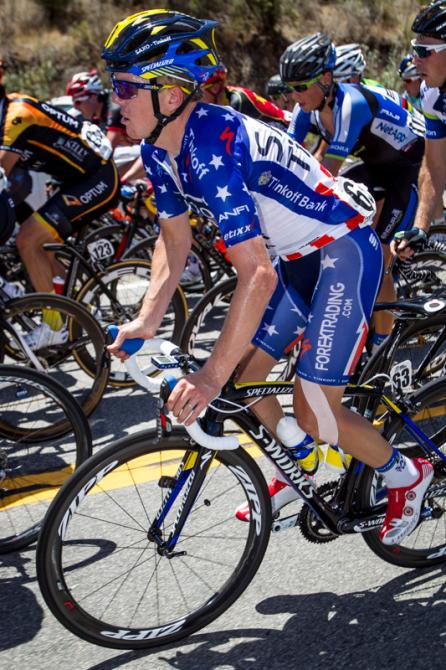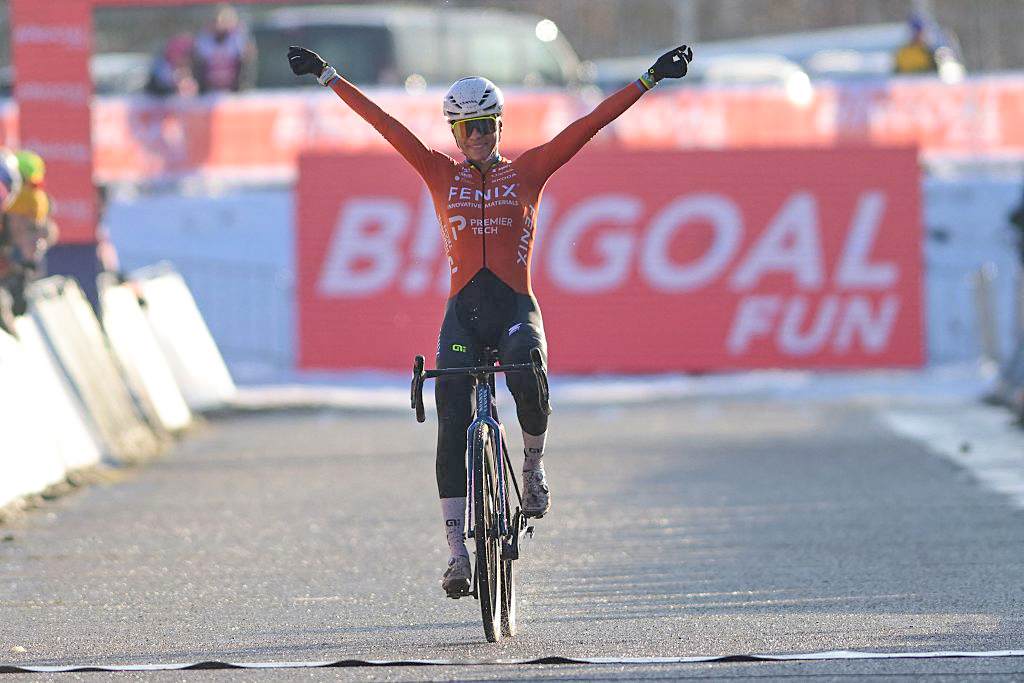Racing in the extreme
From cold to hot

The peloton has really seen two extremes of racing so far this year, between the Tour of California stage to Palm Springs, where it was about 120 degrees, and Milan-San Remo, where it was at the other end of the thermometer. The heat was a huge factor for everyone, because you couldn't just ride along: for five hours it was a constant effort of going back to the team cars for water, ice, electrolyte drinks or food.
How hot was it? I was completely soaked, head to toe with sweat and water at the finish, but within five minutes of descending to the bus I was totally dry. That's how hot. It was like being in a convection oven.
After days like today, there is always a discussion about whether or not it is safe to race in those conditions. I was lucky to have had good access to water all day, and didn't feel that bad, but at the finish I saw plenty of guys who were in bad shape. It was like in Milan-San Remo, where guys were just done in with hypothermia. We all have what we need to be prepared for the weather - all the clothing or hydration strategies you think you need - but sometimes the conditions are beyond what you expect.
In Italy, the race organisation stopped the race and riders got on the team buses to warm up, take hot showers, get dry clothes and thaw out. But what could they have done for Palm Springs? We were joking as we descended into the blast furnace that was Palm Desert that maybe they could stop the race at the hotel, we could run in for a Frappuccino and a cold shower, sit in the air conditioning for an hour, then head up and race the final climb.
Other than that, the day went pretty well, aside from having an impromptu flight over the bars. Johnny Cantwell hit one of the many cat-eyes that dot the California highways and crashed, taking out me, Philippe Gilbert and Bert Grabsch. Those things are everywhere, and one moment of inattention or a bad line through a corner and down you go.
I just sat there on the ground for a while, not wanting to move and checking my collarbone to make sure it wasn't broken. I was just super pissed off to be laying on the ground again.
It turned out Johnny was worse off than I was. It was a good thing we were in the middle of nowhere and there were no spectators, because his jerseys and shorts were so shredded that he was standing there basically buck naked. So not only did he have to get a bike change, he had to get a whole new kit.
The latest race content, interviews, features, reviews and expert buying guides, direct to your inbox!
He and I limped around the back of the field for a while, I was just waiting to hit a bump hard, and feel a pain that would tell me something was wrong, but luckily that never happened. In the end, I had a broken helmet, a really sore neck and a bruised sternum-clavicle joint. Johnny lost a lot of skin and bruised some ribs, but won't take the start because of the risk of infection.
I started to come around as we went along. The legs are feeling better by the day, so that's good.
The first two stages produced a solid GC shake down, with only a few riders in contention already, so it should be a little more controlled in the upcoming sprint-friendly stages. But they're not super easy, so maybe a tired peloton will let a break stick one of these days.
Today's stage will feel a little better than yesterday, but it's still four and a half hours of riding in the oven. One thing is for sure, there are no cruise-y days at the Amgen Tour of California this year.
The 2012 USA Professional Road Champion, Timmy Duggan will be sharing his experiences as he returns to the Tour of California with his new Saxo-Tinkoff team. Having overcome a broken leg in Tour Down Under, the Colorado resident is looking to get back up to top form and show his stars and stripes jersey with pride.
